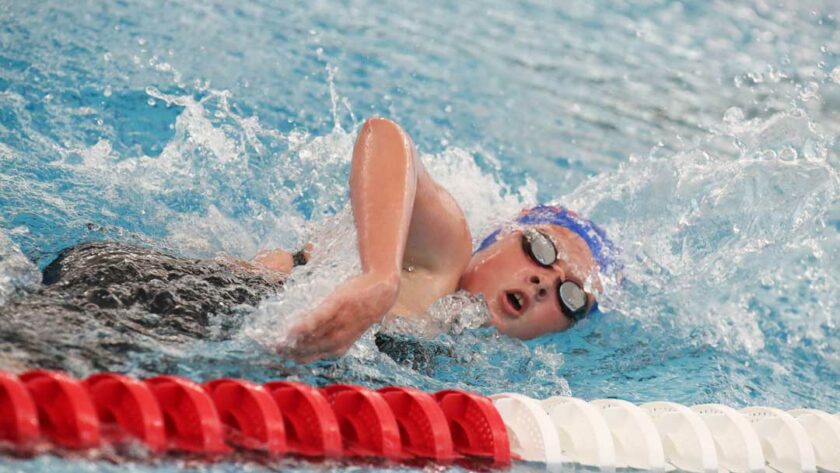My daughter once taped her swimming goal to the bathroom mirror. That simple note kept her focused for months. It was my first real glimpse into how sport goal setting can motivate young athletes in a powerful, personal way.
Sport goal setting gives young athletes purpose. It helps swimmers track progress and stay motivated during tough practices. However, vague or unrealistic goals can lead to frustration.
How to Make Sport Goal Setting Fun and Effective for Your Swimmer
As a former swimmer and swim mom, I’ve seen both sides. The key is balancing big dreams with measurable progress.
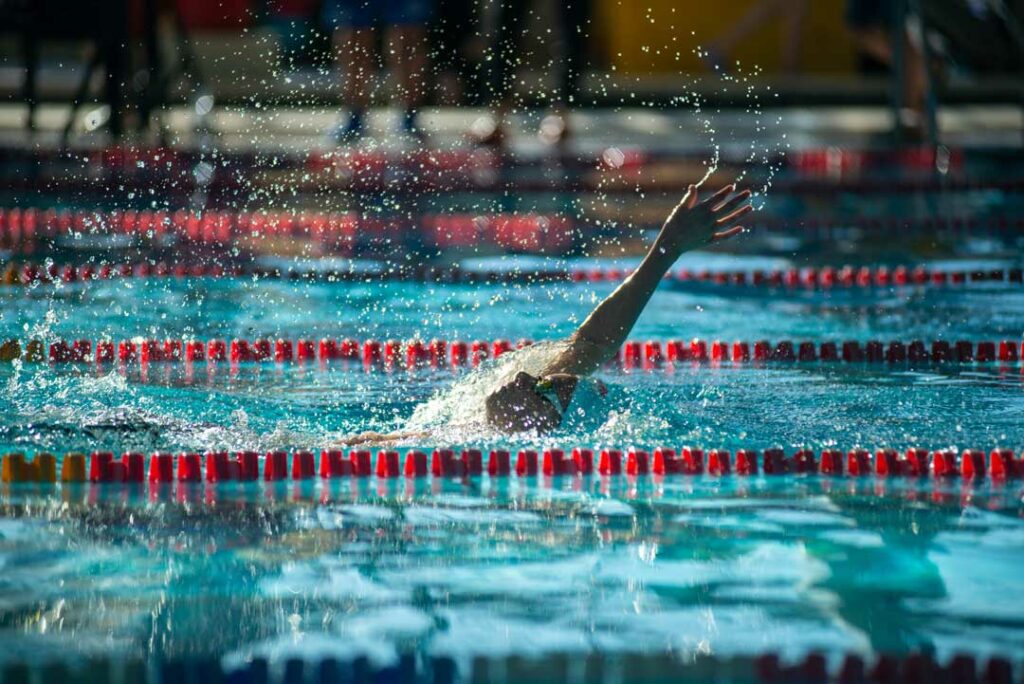
In this post, I’ll show you how to support swimmer goal setting in a way that feels exciting—not stressful.
We’ll cover setting swimming goals, provide swimming goals examples, and explore how to guide your child in setting athletic goals they can actually reach.
Why Goal Setting Matters in Swimming
As a former competitive swimmer and now a swim mom, I’ve seen firsthand how powerful sport goal setting can be. It’s not just about getting faster or dropping time. It’s about building strong, resilient athletes who take ownership of their growth.
When swimmers set meaningful goals, they start showing up differently — to practice, to meets, and even to setbacks.
Builds Confidence That Lasts
Youth sports can shake a child’s confidence if they don’t feel in control. But with clear, realistic goals, your swimmer gets a sense of direction. Instead of comparing themselves to others, they start focusing on their own progress. That shift builds confidence that carries into other areas of life.
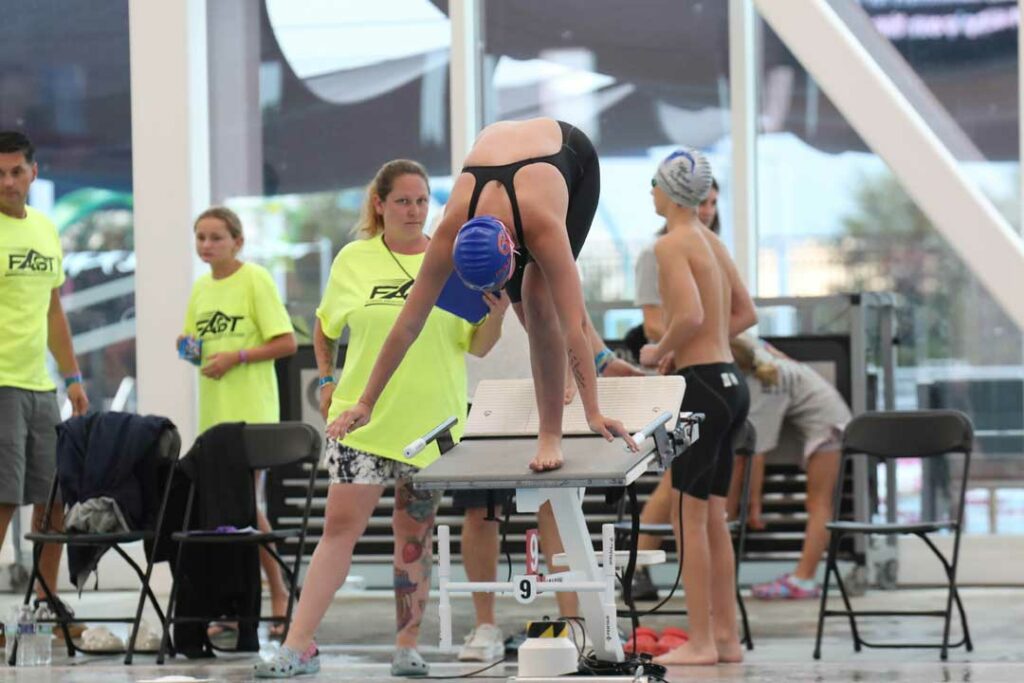
Swimmer goal setting also teaches them how to bounce back. Not every race will be a personal best, and that’s okay. What matters is learning to measure growth beyond medals or placements.
Gives Purpose to Every Practice
Swimming is a repetitive sport. Endless laps, early mornings, long weekends at the pool. Without clear goals, it’s easy for young athletes to lose motivation. When your swimmer knows what they’re working toward, every practice has meaning. They’re not just showing up — they’re investing in something they care about.
Setting swimming goals helps them connect their daily effort with long-term results. Whether it’s improving technique, increasing endurance, or mastering a race strategy, progress becomes more intentional.
Helps Track Progress Over Time
Swimming improvement doesn’t happen overnight. It often takes weeks or months to see small changes. But goals give swimmers a framework to track that progress.
Writing down times, skill improvements, or meet experiences helps them see patterns and growth.
This is where swimming goals examples can help. A younger swimmer might focus on a legal breaststroke kick.

A more advanced swimmer might aim to split their 200 free more evenly. Each goal adds to the bigger picture.
Encourages Ownership and Accountability
When athletes take part in setting athletic goals, they become more invested. Ownership leads to accountability — and pride. Instead of relying on a coach or parent to define success, they learn to define it for themselves.
That sense of control matters, especially in a sport that can sometimes feel out of their hands. Letting your swimmer help set their goals teaches them to self-reflect, adjust when needed, and celebrate the process.
A Parent’s Role in the Process
It can be tempting to jump in and set goals for your child. But sport goal setting is most effective when the athlete leads. As a parent, your job is to support, guide, and encourage. Ask open questions like, “What do you want to improve this season?” or “What did you feel proud of at your last meet?”
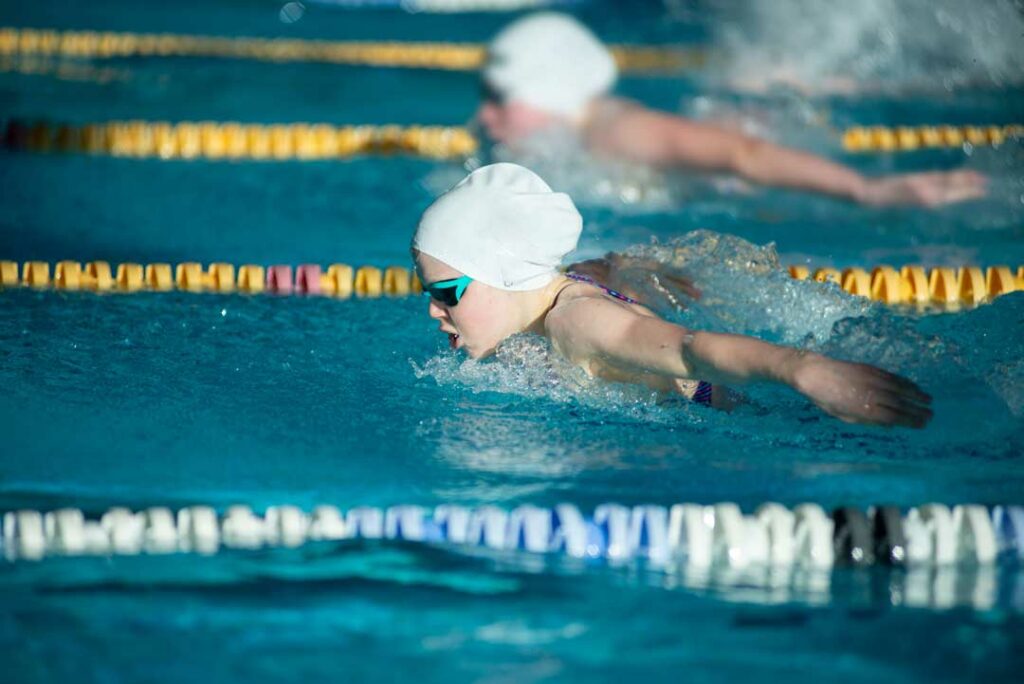
The goal-setting process becomes a way to connect, not to control. And that kind of support builds a foundation for both athletic and personal growth.
The Difference Between Big Goals and Realistic Ones
Every swimmer dreams big—qualifying for state, winning a medal, breaking a team record. And that’s a good thing. But for swimmer goal setting to actually work, we have to help our kids set goals that are both inspiring and achievable.
This is where balance matters. There’s a big difference between a long-term dream and a short-term, realistic goal. Both are important. But knowing which is which—and when to focus on each—makes all the difference in keeping your swimmer motivated.
Long-Term Goals vs. Short-Term Goals
Long-term goals are often big-picture milestones. They’re the dream—making finals at a championship meet, earning a college scholarship, or one day standing on the podium.
Short-term goals, on the other hand, are the building blocks that get your swimmer there. These goals keep the daily grind meaningful. For example, improving streamline technique or holding consistent splits in a race.
Both types of goals have value. But without realistic short-term targets, long-term dreams can feel overwhelming.
What Realistic Looks Like at Different Levels
Setting athletic goals should always take into account your child’s age, ability, and level of experience. A realistic goal for an 8-year-old might be swimming a 100 IM without disqualification. A 12-year-old might aim to drop two seconds in their 100 freestyle. A high schooler might work toward consistent morning practices or making regional cuts.
The key is to make sure goals match your swimmer’s stage—not someone else’s.
Use the SMART Goal Framework
One of the best ways to guide a swimmer’s goal setting is with the SMART method. That means goals should be:
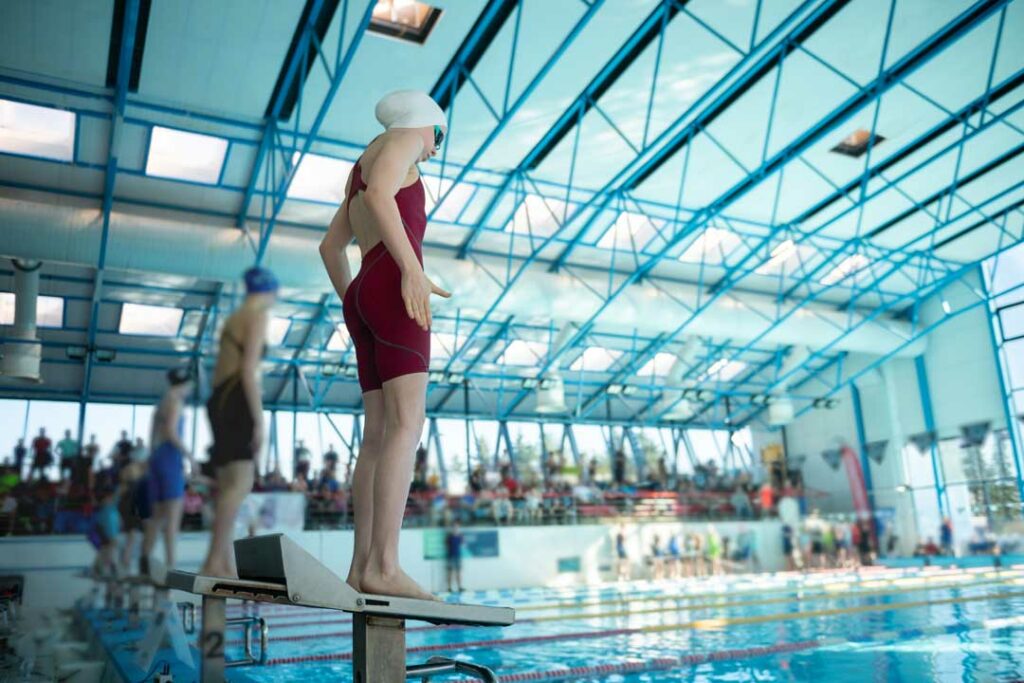
- Specific – Focused on one area, like underwater kicks or flip turns
- Measurable – You can track progress (like time drops or attendance)
- Achievable – Within your swimmer’s current ability with effort
- Relevant – Tied to something they care about
- Time-bound – Set within a clear timeframe (this month, this season)
This approach keeps goals grounded and avoids vague statements like “swim faster” or “win more races.”
Goals Should Be Flexible
One mistake I often see? Setting a goal once and never revisiting it. Swimming seasons are long. Kids grow. Training changes. Injuries happen. That’s why goals should evolve.
If something isn’t working or feels out of reach, adjust the plan. Teach your swimmer that changing a goal isn’t failure—it’s part of learning how to grow.
Focus on What You Can Control
Another important part of setting athletic goals is recognizing what’s truly within your swimmer’s control. Your athlete can control their effort, attitude, attendance, and how they respond to coaching. But they can’t control how fast someone else swims or which heat they’re placed in.
When swimmers set goals based on effort and improvement—not just outcomes—they develop resilience. That mindset makes them stronger athletes in the long run.
Real-Life Example
Let’s say your swimmer is 12 and wants to win a state title. That’s a great long-term dream. But a realistic short-term goal might be, “Drop two seconds in the 100 freestyle by the end of the season.” That target is measurable, achievable, and gives them something to work toward at every practice.
In our family, my own 12-year-old swimmer is working toward a FLAGS cut in the 500 freestyle for Spring FLAGS. It’s a perfect example of a SMART goal. It’s specific (qualify in the 500 free), measurable (a clear time standard), achievable (with consistent training and focus), relevant (she’s passionate about distance events), and time-bound (the qualifying deadline is set for early spring).
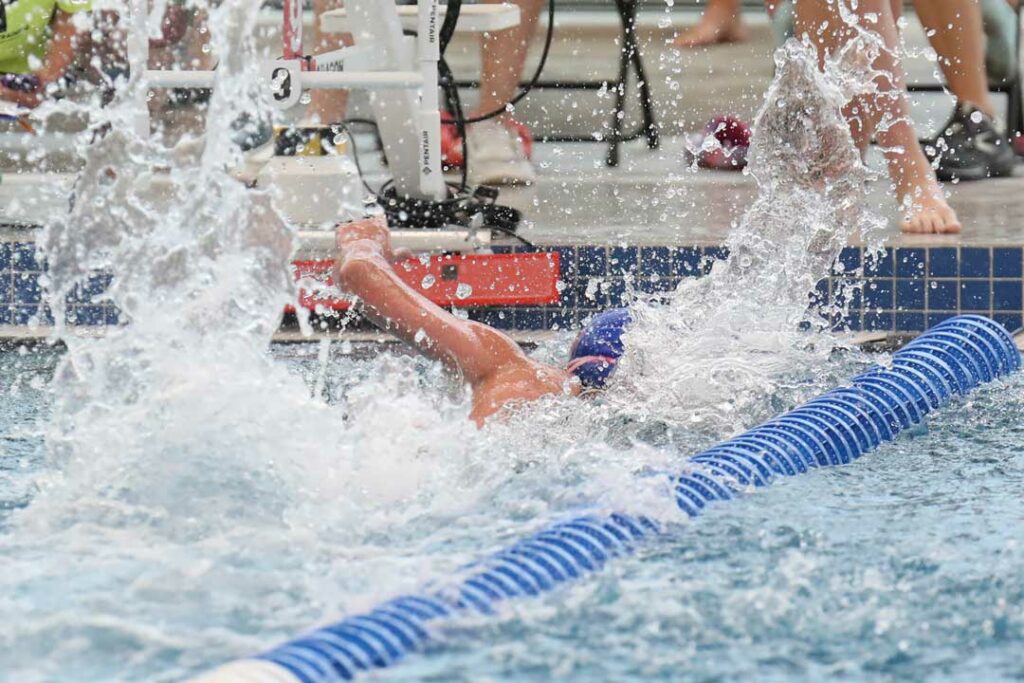
Having that kind of goal has helped her stay focused during tough practices and has made the process feel more purposeful—not just about the result, but the journey to get there.
How to Start Setting Swimming Goals (That Stick!)
Setting swimming goals that actually motivate your child starts with a look back. Before jumping into what’s next, take time to reflect on the past season. What went well? What were the tough moments? Celebrate growth—even if it didn’t show up as a best time.
Once your swimmer has looked back, it’s easier to identify their strengths and challenges. Are they great at distance events but struggle with turns? Do they bring energy to practice but need help with pacing? Knowing these things helps create goals that feel personal and specific.
From there, it’s time to set SMART goals. That means choosing goals that are specific, measurable, achievable, relevant, and time-bound. “Get better at backstroke” is too vague. “Hold under 40 seconds in backstroke sets by October” gives direction and a clear target.
Writing the goals down makes a big difference. Use a notebook, dry-erase board, or goal chart—whatever helps your swimmer stay focused. And don’t forget to review those goals. As the season changes, so should the goals. Checking in monthly or after a meet gives you and your swimmer a chance to adjust and refocus without pressure.
The key is helping your swimmer take ownership of their goals while reminding them that progress, not perfection, is the real win.
Swimming Goals Examples by Age and Stage
One of the best ways to make goal setting more effective is to tailor it to your swimmer’s age and stage. What’s realistic for an 8-year-old looks very different than what drives a teen athlete. Below are swimming goals examples that combine both performance-based and process-focused goals to help guide your conversations at home and with coaches.
| Age Group | Performance Goals | Process Goals |
|---|---|---|
| 8 & Under | Swim all 4 strokes legally Complete a 100 IM without disqualification |
Attend all weekly practices Stay focused during lessons and drills |
| 9–10 | Improve flip turns and dolphin kicks Qualify for local championship meets |
Warm up independently at meets Arrive early and prepared for practice |
| 11–12 | Drop time in 200 IM or 500 Free Achieve Junior Olympic (JO) time standards |
Track personal bests in a goal journal Stay positive after tough races |
| 13–14 | Final at high-level or state meets Improve pacing and race strategy |
Add weekly dryland sessions Practice race visualization and planning |
| 15 & Over | Qualify for Sectionals or Nationals Refine technique in weaker strokes |
Lead younger teammates by example Follow a consistent sleep and recovery routine |
Including both performance and process goals teaches swimmers that effort matters just as much as results. As they grow, help them revise goals regularly to reflect their development—and keep the joy in the journey.
Make It Fun! Ways to Motivate Without Pressure
Sport goal setting works best when it’s part of your swimmer’s world—not something added on top of it. Below are simple, low-pressure ways to make swimmer goal setting more enjoyable and effective at every age and stage.
| Strategy | What It Looks Like | Why It Works |
|---|---|---|
| Visual Trackers | Sticker charts, journals, or a dry-erase board in the kitchen | Makes goals visible and encourages daily focus without pressure |
| Small Rewards | Choose dinner, a movie night, or a new swim cap | Reinforces effort over outcomes and keeps motivation high |
| Celebrating Small Wins | Shout-outs for strong effort, technique improvements, or great sportsmanship | Builds confidence and shows that progress matters more than perfection |
| Family Goal Chats | Weekly 5-minute check-ins during dinner or Sunday night wind-down | Keeps everyone aligned and shows your swimmer that their goals matter |
Simple Strategies That Turn Goal Setting Into a Game
Goal setting doesn’t have to feel like schoolwork. In fact, when it’s playful and personalized, it becomes something your swimmer looks forward to. If you want your child to stay motivated without burning out, try weaving fun and flexibility into the process.
Create visual goal trackers together. These can be goal boards, sticker charts, or swimming journals filled with small milestones. Younger kids love adding stickers when they hit a goal—like remembering their streamline or getting out of bed for practice without a fuss.
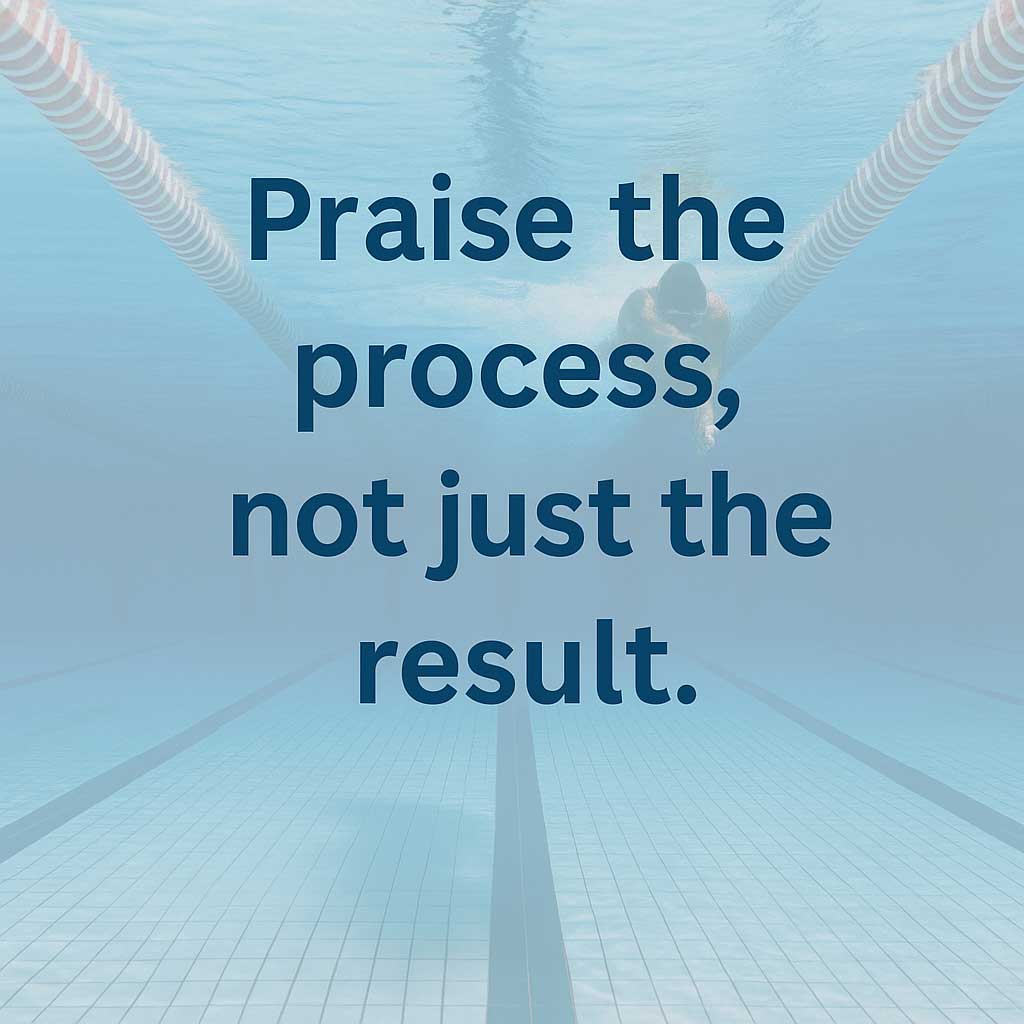
Celebrate the little wins, not just the big ones. Maybe they held their breath one more dolphin kick off the wall. Or finally nailed a legal breaststroke kick. Those moments matter. A small treat or a shout-out at family dinner can go a long way.
Use rewards that recognize effort, not just outcomes. Maybe your swimmer gets to choose dinner on a hard training week or pick out a new suit after a strong season of showing up. The goal is to reinforce consistency and growth—not just winning.
One of our favorite traditions is a Sunday night goal check-in. It’s short, casual, and gives everyone a chance to share wins and adjust goals. Sometimes it’s serious, sometimes silly, but it keeps the conversation going—and shows your swimmer that you’re in this with them.
The Parent’s Role in Goal Setting Success
As parents, we play a huge role in how our swimmers experience goal setting. But that role should feel like support—not control.
When it comes to setting athletic goals, your job isn’t to decide what matters most. It’s to help your swimmer figure that out for themselves. Start by asking open-ended questions like, “What felt good about your last race?” or “What are you most excited to work on this season?”
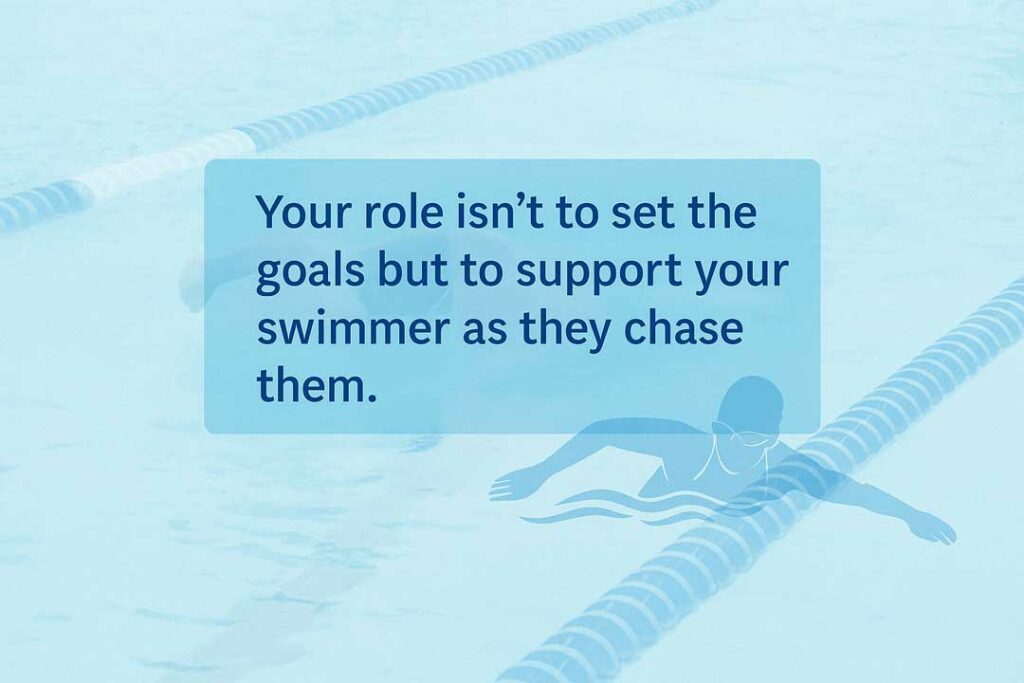
These conversations open the door for reflection and ownership. Your swimmer begins to connect their training to their goals—and their goals to their identity as an athlete.
Encourage progress, not perfection. Help your child understand that setbacks are normal. If a goal suddenly feels out of reach, it’s okay to revise it. Goals should be flexible, just like the athletes working toward them.
Also, keep in mind that swimming is both physical and emotional. Support your child’s mental wellness alongside their performance. Celebrate effort. Offer grace after hard races. Remind them that their worth isn’t tied to a time on the scoreboard.
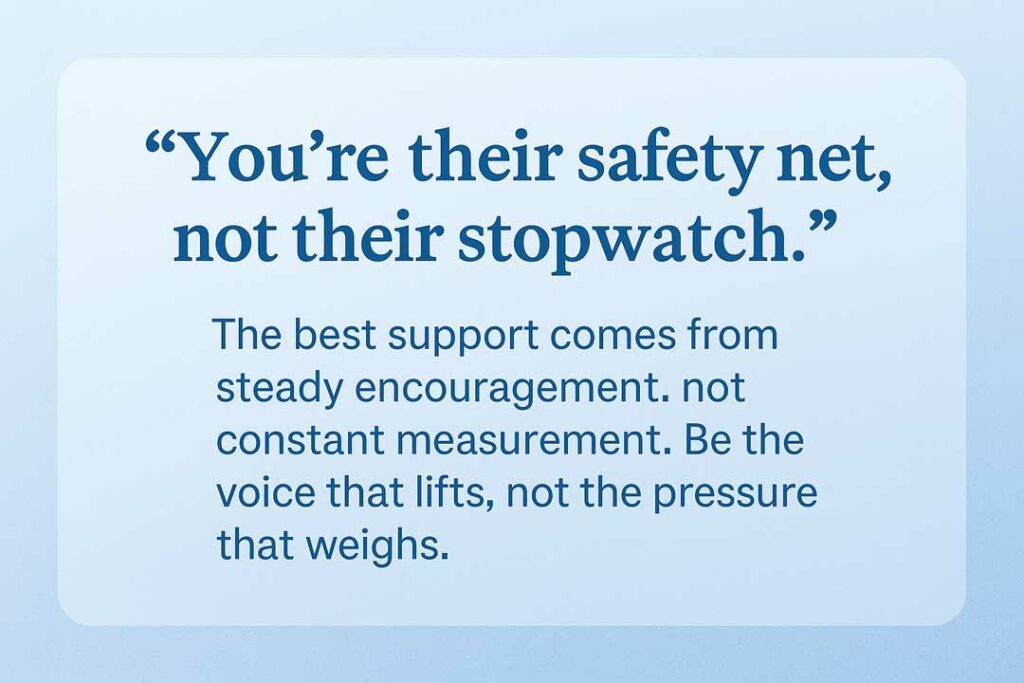
When you focus on growth and consistency—not just outcomes—you help your swimmer develop the mindset they need for long-term success in and out of the pool.
Keep the Big Picture in Sight
At the end of the day, sport goal setting should inspire your swimmer—not overwhelm them. Goals are tools for growth, not tests of worth.
Help your athlete stay connected to the reason they swim in the first place. Whether it’s the thrill of racing, the joy of improving, or the friendships on deck, that love fuels long-term success far more than any stopwatch.
Remind yourself (and your swimmer) that progress is the real goal—not perfection. Growth doesn’t always show up in ribbons or time drops. Sometimes, it’s confidence. Sometimes, it’s grit.
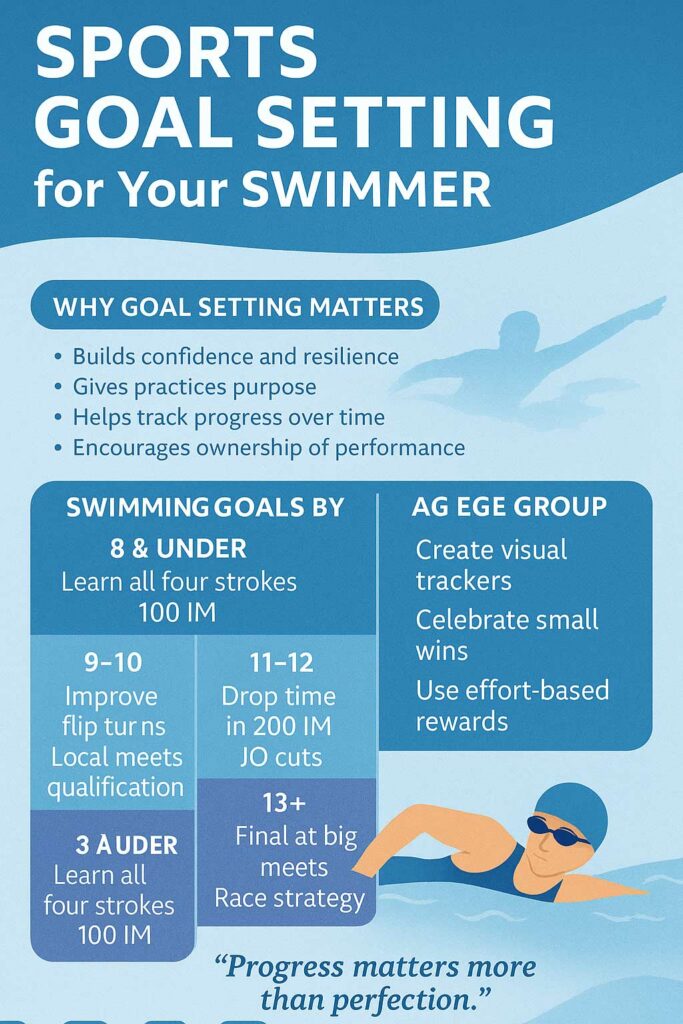
Whether they’re chasing a JO cut or simply learning to love butterfly, every step forward matters. Every goal, big or small, is worth celebrating. Because the journey—not just the finish—builds the athlete.

